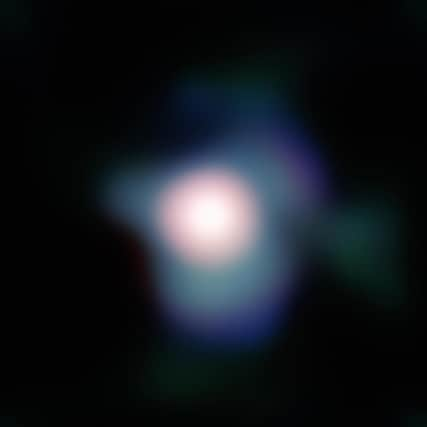Betelgeuse: famous star will disappear in the night sky - how to see it in the UK


One of the brightest stars in the night sky will disappear for a few seconds in a historic “once-in-a-lifetime” event, astronomers say.
Betelgeuse will grow fainter and fainter until it almost disappears for 7-12 seconds for stargazers living in a narrow part of southern Europe and across the Atlantic Ocean into the Bahamas, southern Florida and part of Mexico as the asteroid Leona will pass in front of the star but it is expected to still leave some to filter through to appear to Earth-based observatories.
Advertisement
Hide AdAdvertisement
Hide AdIn Cordoba, Spain, the mid-point of the event is expected to be at about 1:15:45 am UTC (2:15:45 am local time) on 12 December, while in Florida, US, the event will peak at about 8:24:54 pm local time on 11 December.
To see the famous star, observers need only modest equipment to observe the asteroid’s passing, experts say - but it won't be visible in the UK. To see it, however, the Virtual Telescope Project – which uses powerful robotic telescopes to broadcast cosmic events – is streaming it live online.
The livestream, available on YouTube, will start at 01:00 GMT and the occultation should be complete within half an hour.
Astrophysicist Miguel Montargès at the Paris Observatory has described the "exceptional" event as a "once-in-a-lifetime opportunity".
Advertisement
Hide AdAdvertisement
Hide Ad"The asteroid (Leona) will appear to move from west to east in the sky, and for northern hemisphere observers that means right to left," Dr Robert Massey at the Royal Astronomical Society told MailOnline.
"It will not be visible from the UK – in Europe the occultation track runs across the Mediterranean, including southern Italy, southern Spain and southern Portugal, and also Florida and Mexico."
Betelgeuse is the 10th brightest star in the sky and is well known for its fluctuating brightness - with concerns suggesting it could be on the brink of explosion. It is 950 times the size of the sun and 642.5 light years away from Earth located in the famous Orion constellation, named after a legendary hunter in Greek mythology.
Betelgeuse is easy to spot, not only because of its brightness and its red tint.
Advertisement
Hide AdAdvertisement
Hide AdWhile later observations revealed that the star is much further from such an end, scientists are still trying to estimate the actual size and other features of Betelgeuse.
In a statement, Gianluca Masi, director of the Virtual Telescope Project, said the rare event could help experts study both the star and the asteroid.
"These kinds of occultations are very useful to constrain the shape of the asteroid involved. Here, we hope to even investigate the surface of the involved star, too – Betelgeuse.
"It is a large red supergiant and while Leona will move in front of it as seen from Earth, we will be hopefully able to learn more about its large convective cells, driving its variable brightness."
Comment Guidelines
National World encourages reader discussion on our stories. User feedback, insights and back-and-forth exchanges add a rich layer of context to reporting. Please review our Community Guidelines before commenting.
